What we’re reading…
This month’s key articles selected by Ryan Chadha, Tamer Shaker, Onur Keskin, and Jiang Liu.
Liver Transplantation
Peri-operative Challenges in Patients Transplanted with Livers from Extreme Obese Donors
The combination of rising rates of obesity and the shortage of deceased donor livers have forced the consideration of marginal liver donors in terms of body mass index (BMI) for liver transplant (LT). To date, there is still conflicting data on the impact of donor obesity on post-LT outcomes. Read more.
International Journal of Cardiovascular Imaging
Assessment of biventricular function in patients with hepatopulmonary syndrome
Cardiac function impairment in the setting of hepatopulmonary syndrome (HPS) in patients with end stage liver disease remains an issue of debate. The current study evaluated possible correlations between HPS and biventricular systolic function in patients with decompensated cirrhosis. Read more.
Liver Transplantation
Pulmonary Vascular Resistance Predicts Mortality and Graft Failure in Transplanted Portopulmonary Hypertension Patients
Portopulmonary hypertension (PoPH) is a type of pulmonary vascular disease associated with significant morbidity and mortality in patients with underlying liver disease, and confers a higher mortality in patients awaiting liver transplantation (LT). Although not a transplant indication, PoPH patients who undergo LT can experience significant clinical improvement, and those who maintain a mean pulmonary arterial pressure (mPAP) < 35mmHg and a pulmonary vascular resistance (PVR) < 5 Woods Units are granted Model for End Stage Liver Disease (MELD) exception points to expedite LT. The effect of PoPH on post-transplant outcomes such as mortality and graft failure, however, is not well defined. Read more.
Transplantation
Autologous Hematopoietic Stem Cell Transplantation for Liver Transplant Recipients With Recurrent Primary Sclerosing Cholangitis: A Pilot Study
Primary sclerosing cholangitis (PSC) is an indication for liver transplantation, but recurrence after liver transplantation is associated with poor outcomes often requiring repeat transplantation. We investigated whether autologous hematopoietic stem cell transplantation (aHSCT) could be used to stop progression of recurrent PSC and promote operational tolerance. Read more.
Journal of Hepatology
Liver transplantation for patients with acute-on-chronic liver failure (ACLF) in Europe: results of the ELITA/EF-CLIF collaborative study (ECLIS)
Liver transplantation (LT) has been proposed to be an effective salvage therapy even for the sickest patients with acute-on-chronic liver failure (ACLF). This large collaborative study was designed to address the current clinical practice and outcomes of ACLF patients wait listed (WL) for LT in Europe. Read more.
Liver Transplantation
Pregnancy outcomes after living liver donation: A multi-institutional study
Nearly half of living liver donors in North America are women of child-bearing age. Fetal and maternal outcomes after donation are unknown. Read more.
Transplantation
Perfusate Enzymes and Platelets Indicate Early Allograft Dysfunction after Transplantation of Normothermically Preserved Livers
Normothermic machine perfusion (NMP) has become a clinically established tool to preserve livers in a near-physiological environment. However, little is known about the predictive value of perfusate parameters towards the outcomes after transplantation. Read more.
Liver Transplantation
The Prognostic Utility of Intraoperative Allograft Vascular Inflow Measurements in Donation after Circulatory Death Liver Transplantation
Donation after Circulatory Death (DCD) liver transplantation improves deceased donor liver utilization and decreases waiting list burden, albeit at increased risk of biliary complications and inferior graft survival. Employing liver vascular inflow measurements intraoperatively permits allograft prognostication. Its utility however in DCD liver transplantation is hitherto largely unknown and explored further here. Read more.
Hepatology
Prospective study of stereotactic body radiation therapy for hepatocellular carcinoma on waitlist for liver transplant
There is no prospective data on stereotactic body radiation therapy (SBRT) as a bridge to liver transplantation for hepatocellular carcinoma (HCC). This study aimed to evaluate the efficacy and safety of SBRT as bridging therapy, with comparison to transarterial chemoembolization (TACE) and high intensity focused ultrasound (HIFU). Read more.







